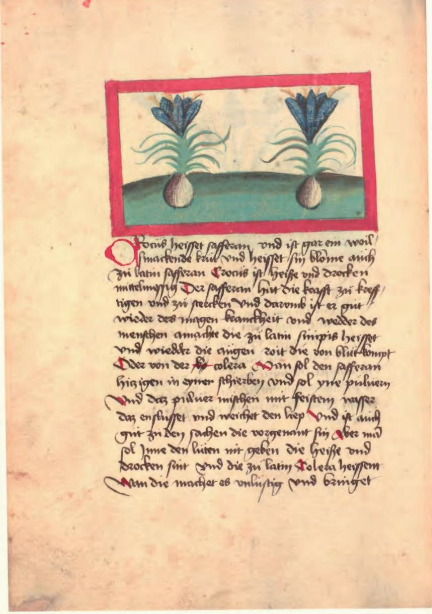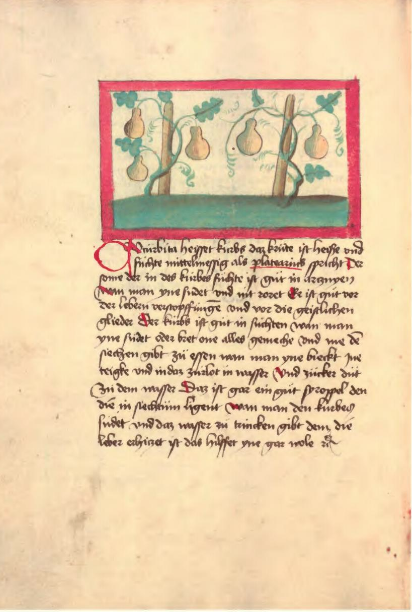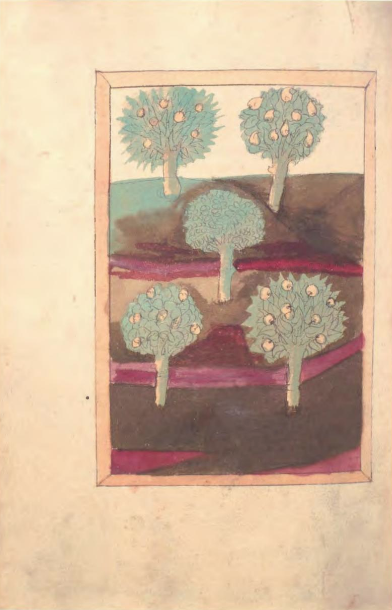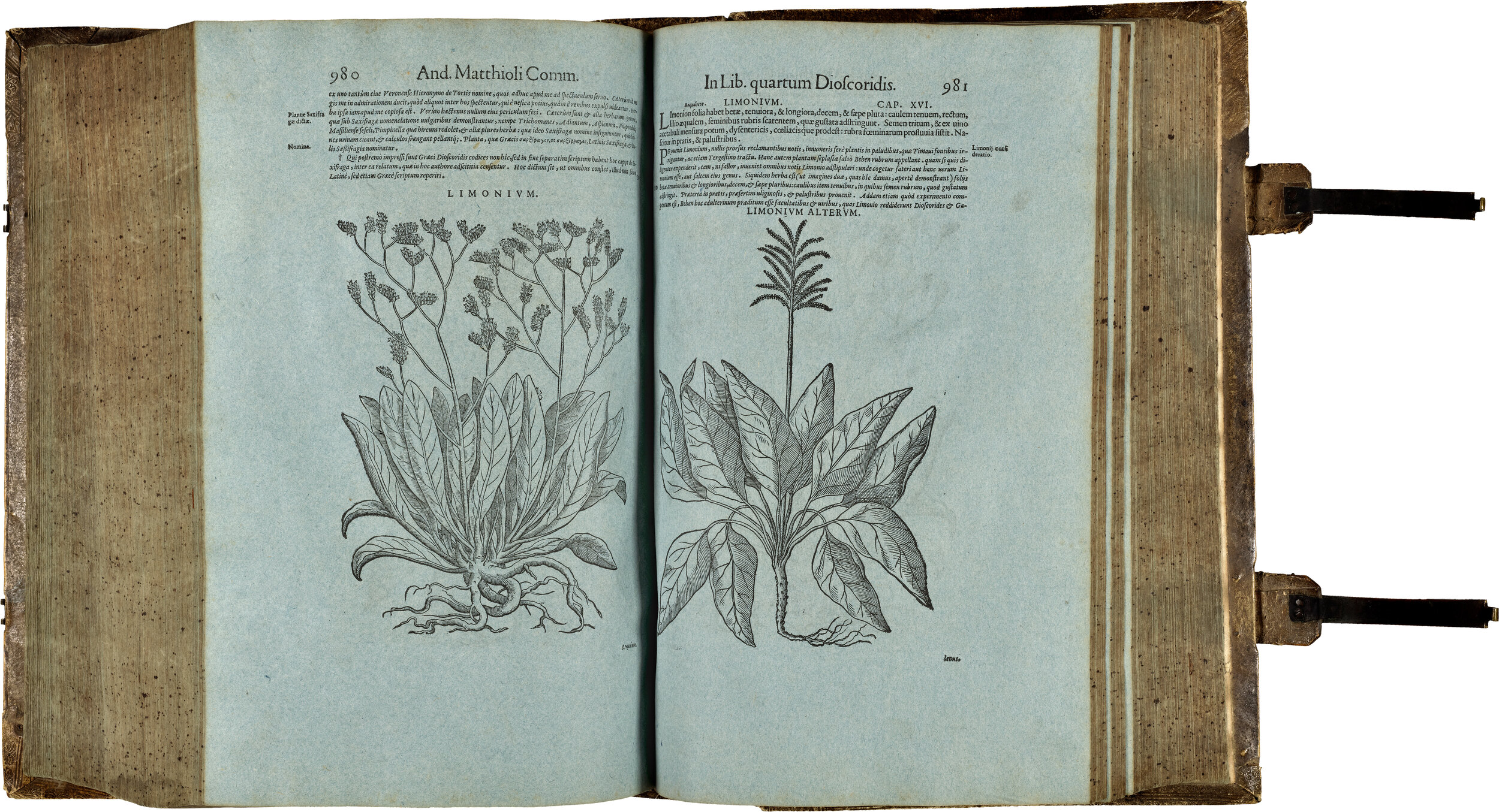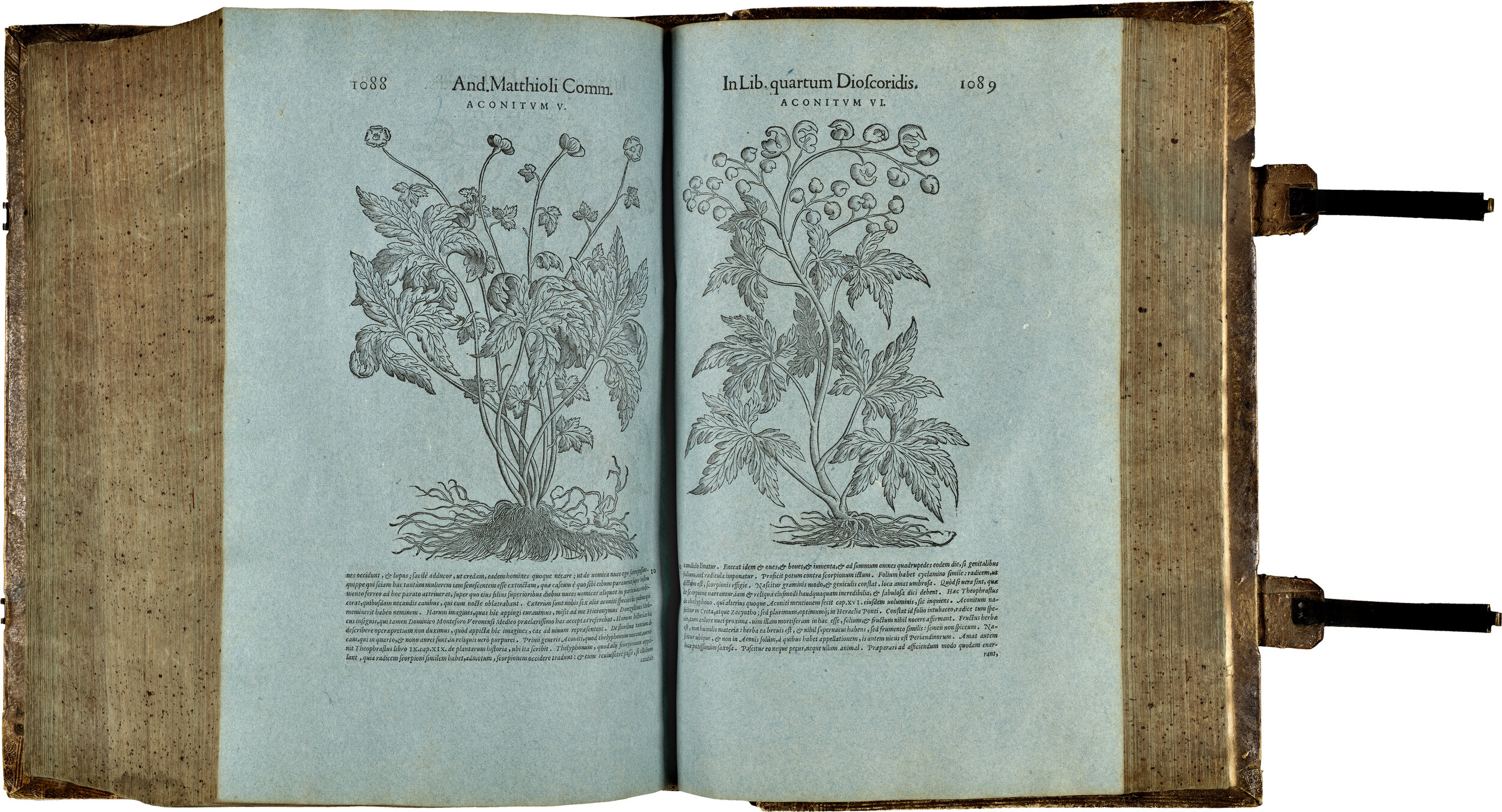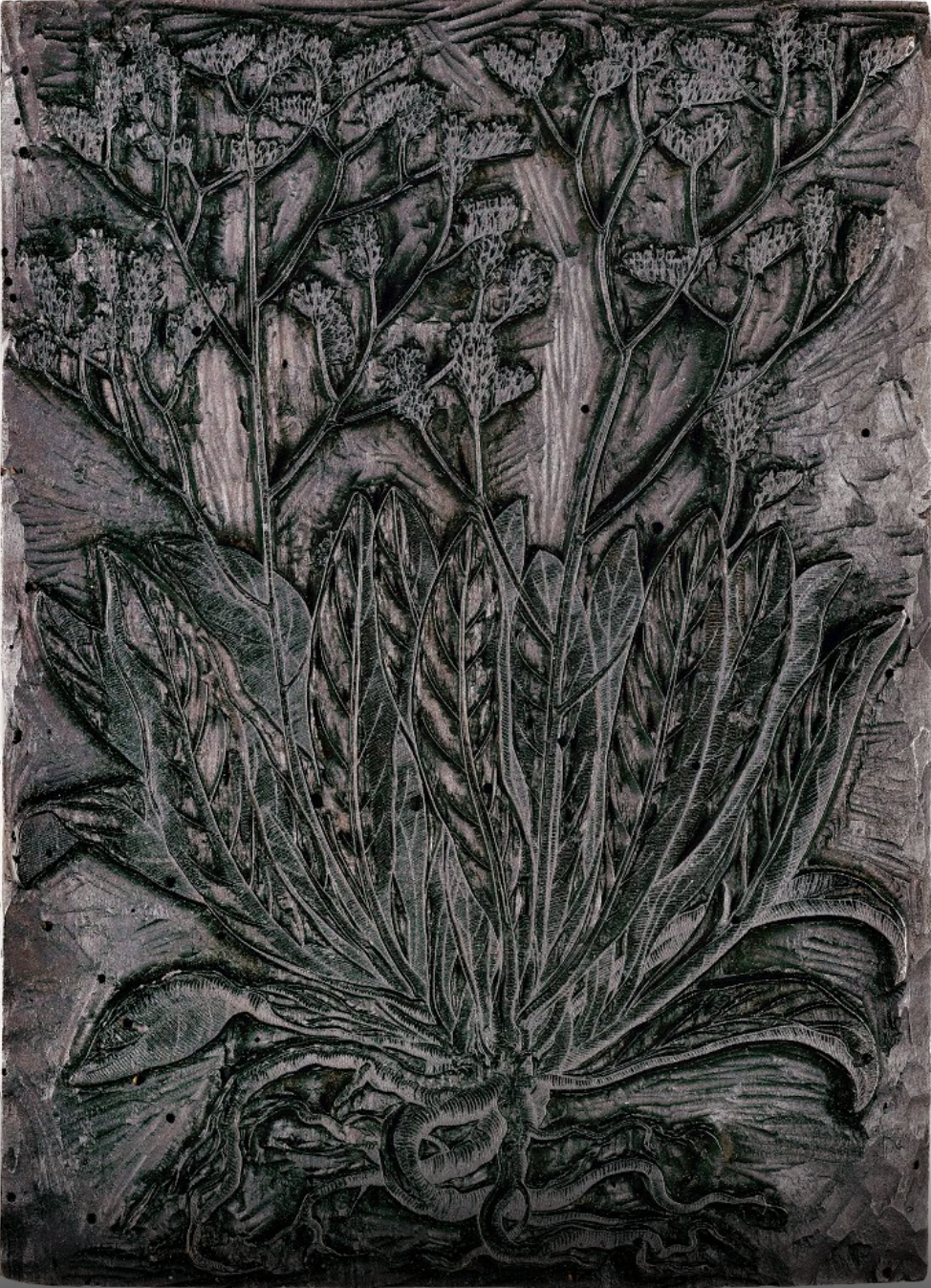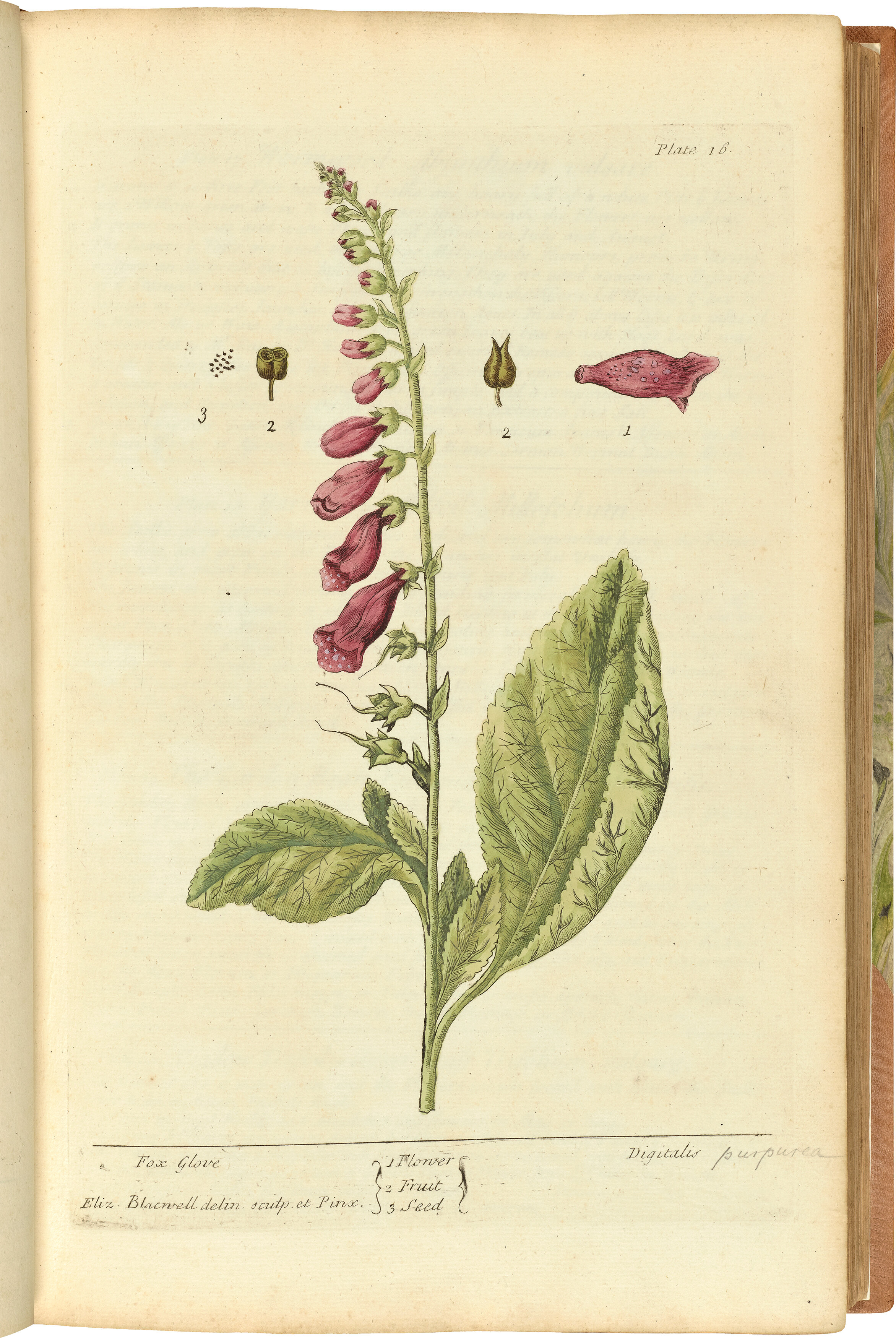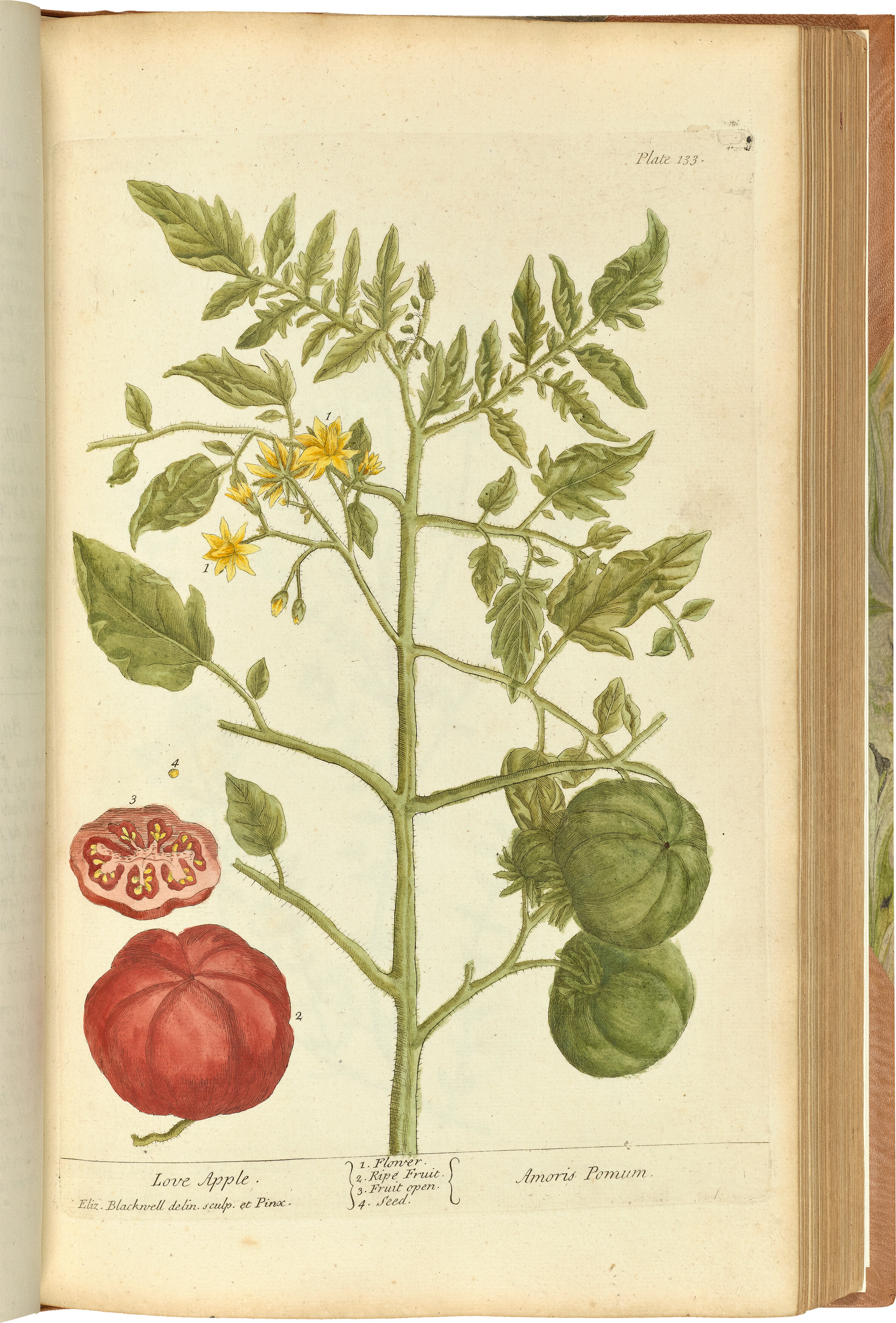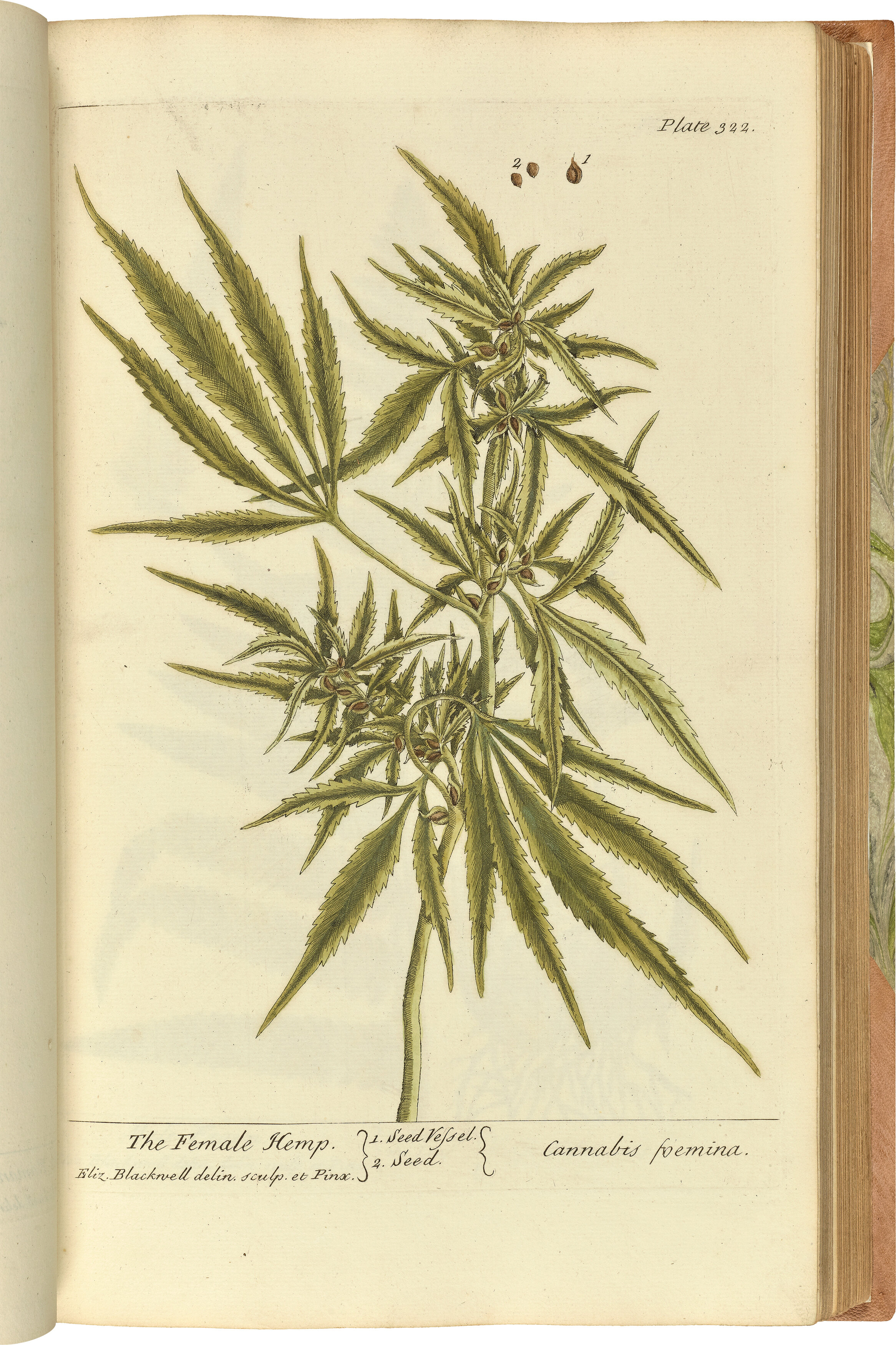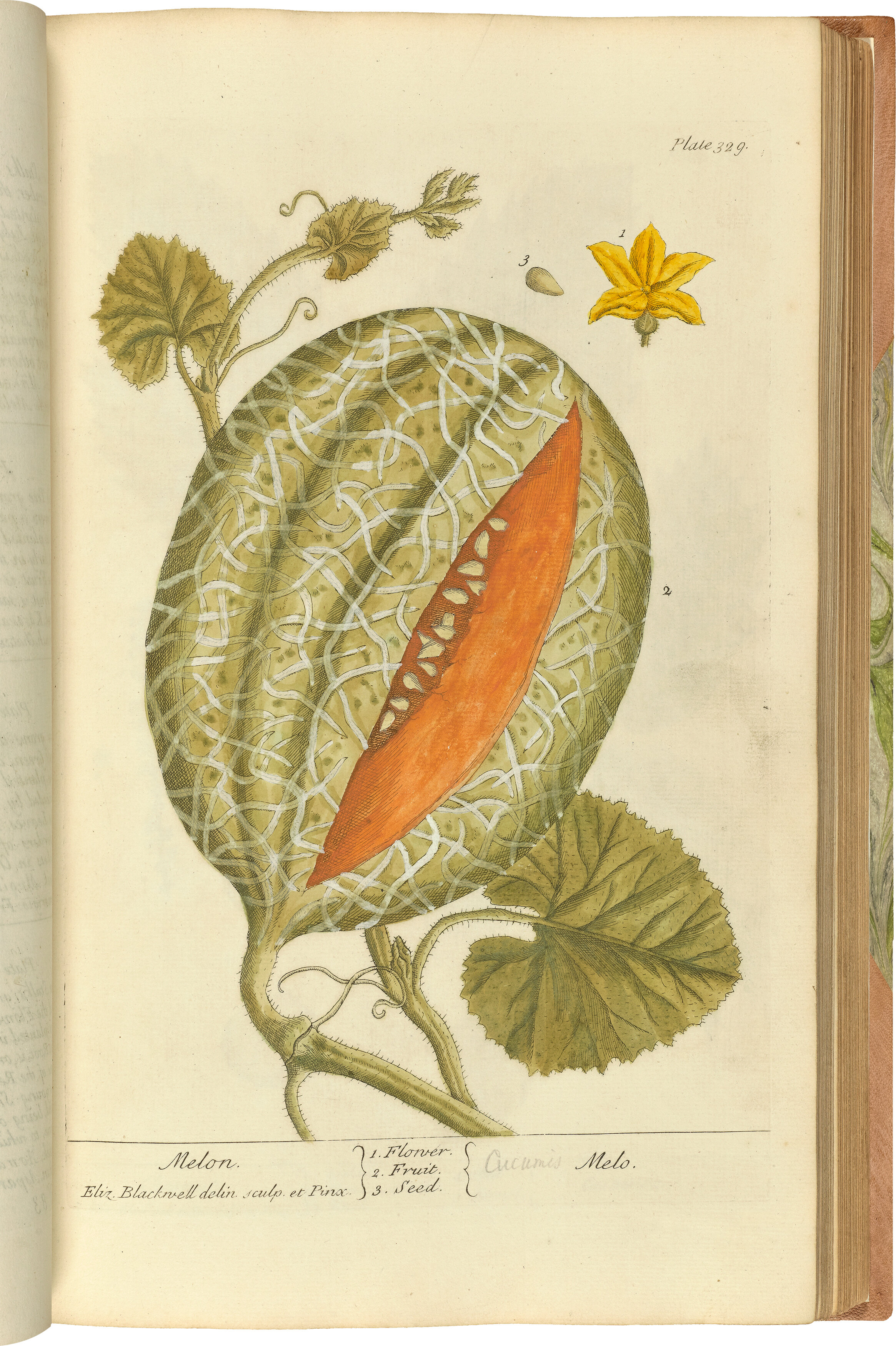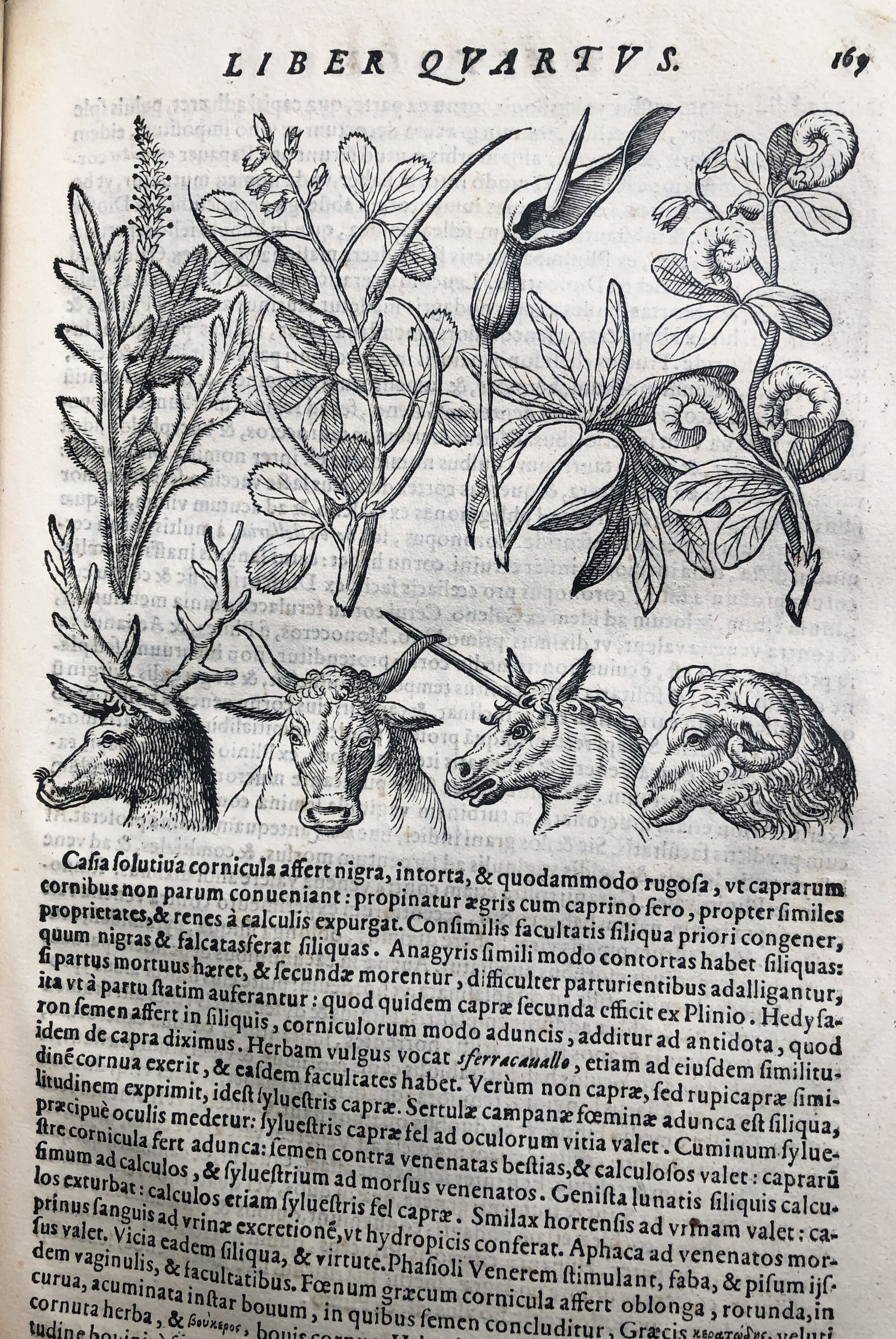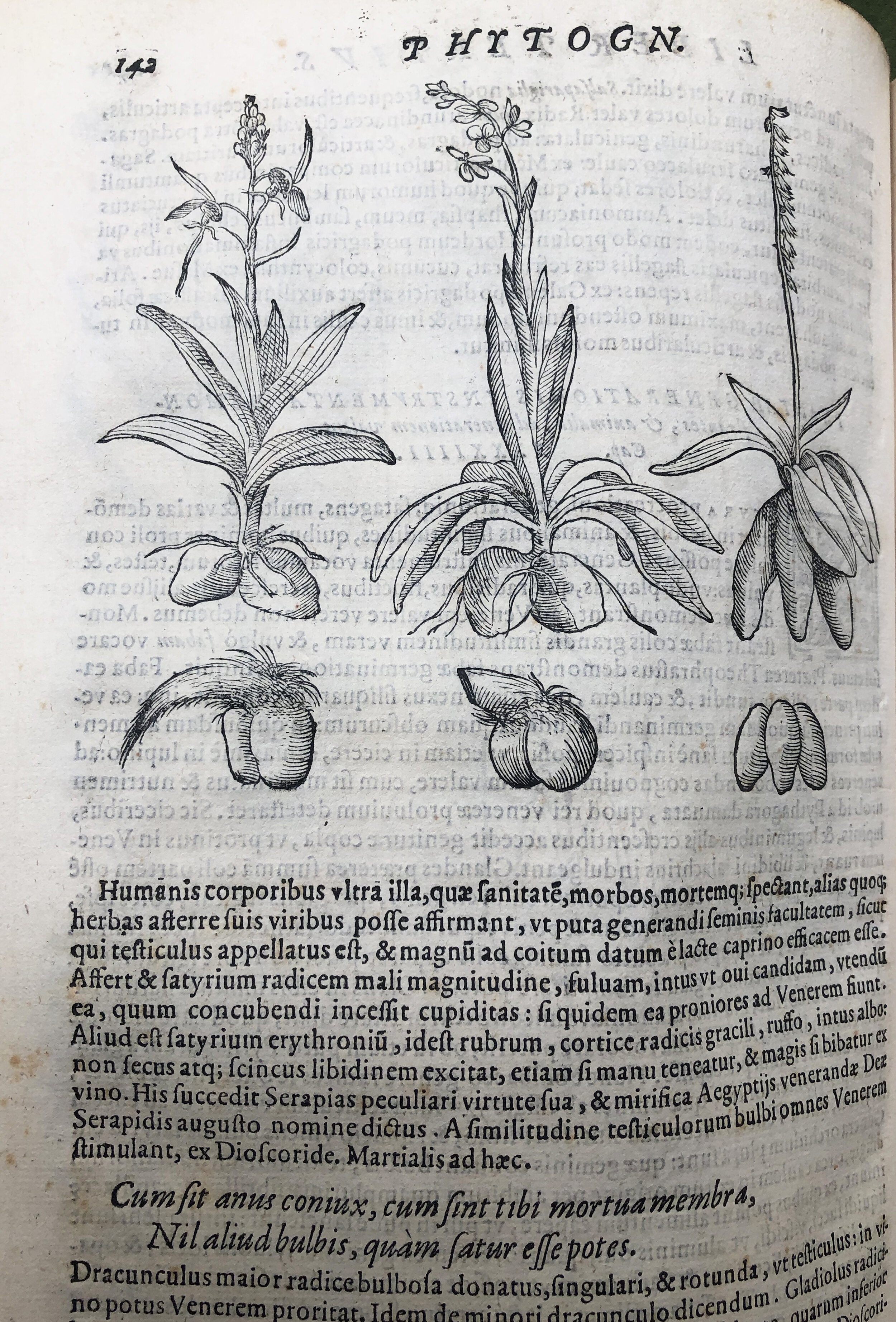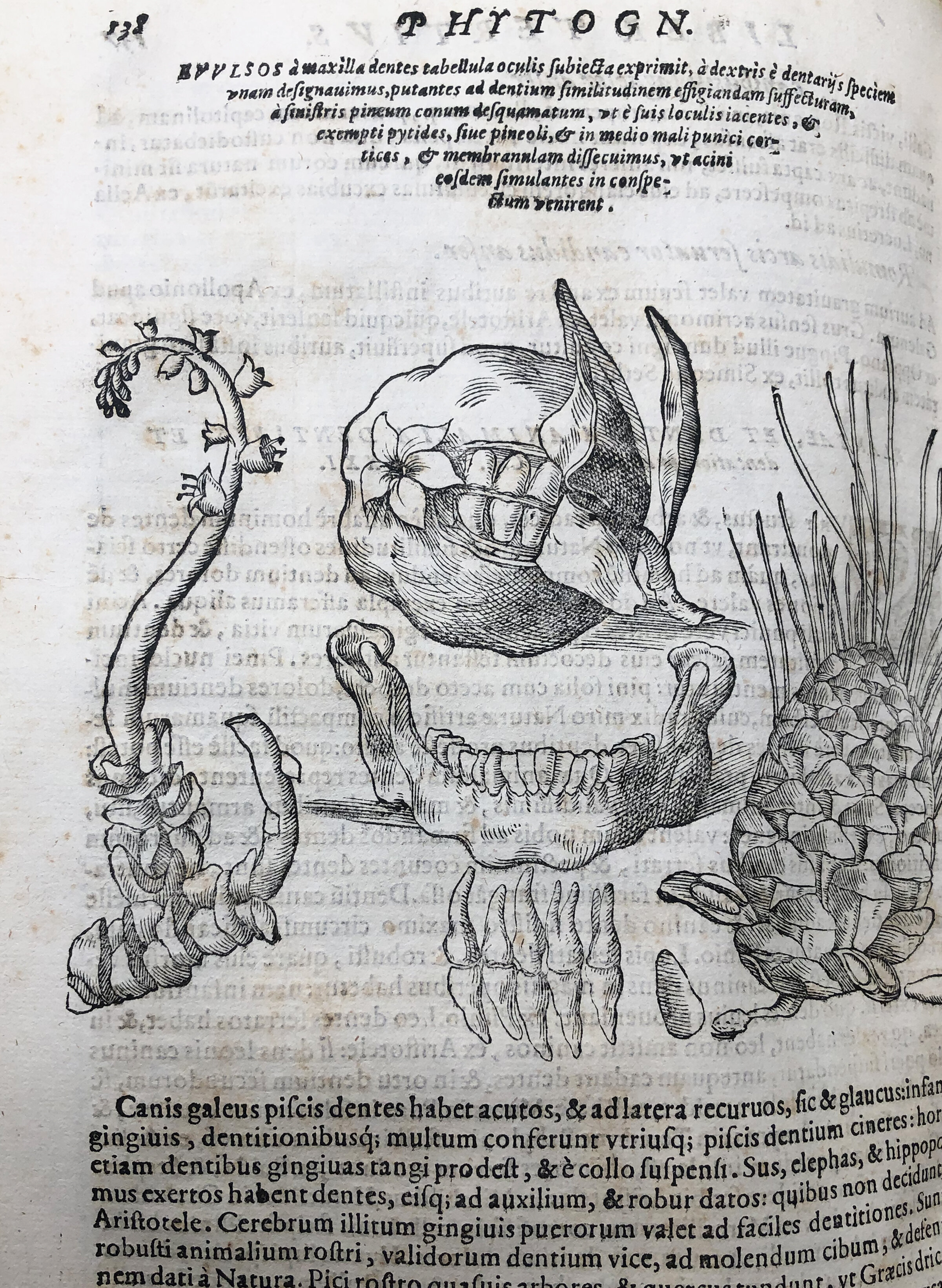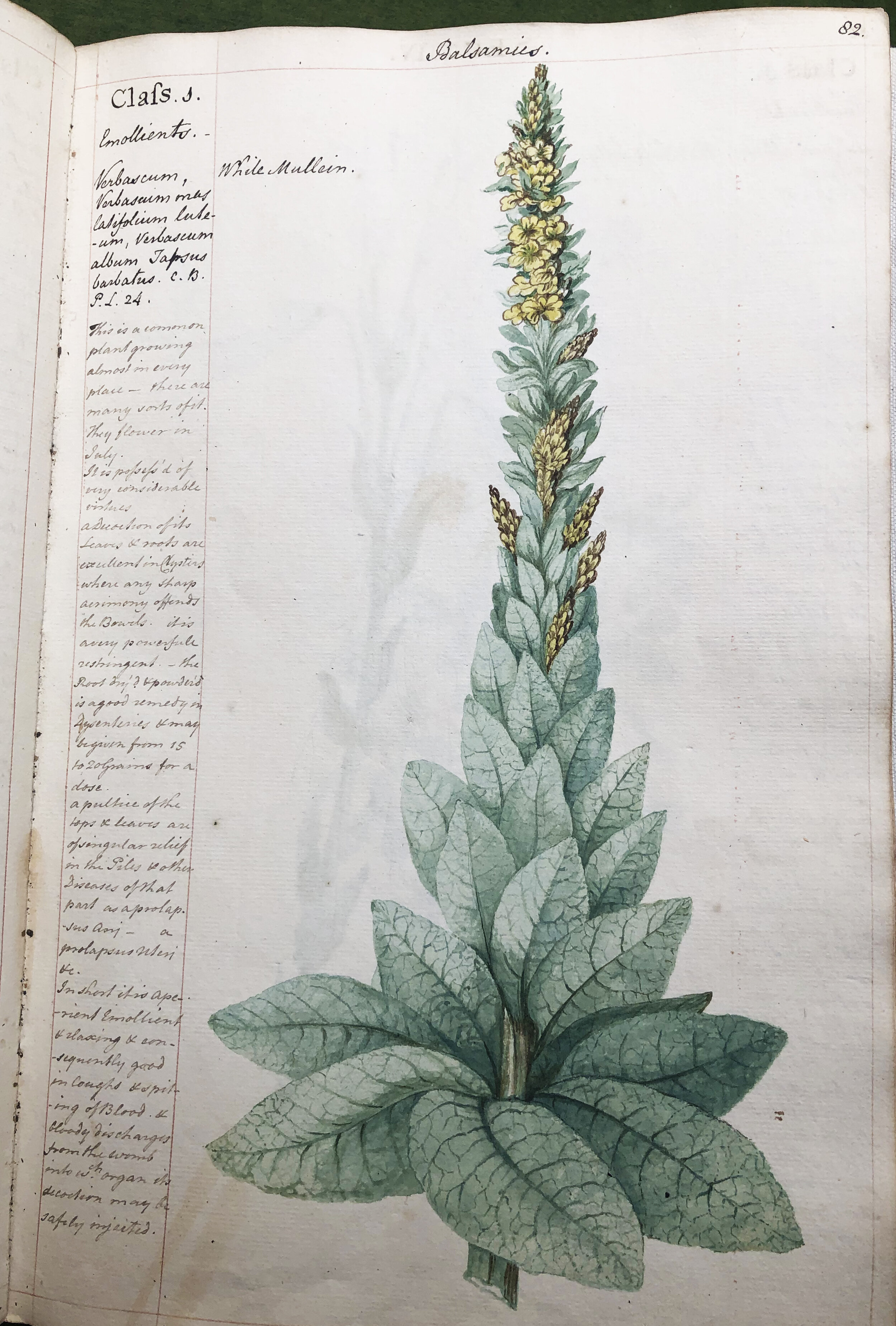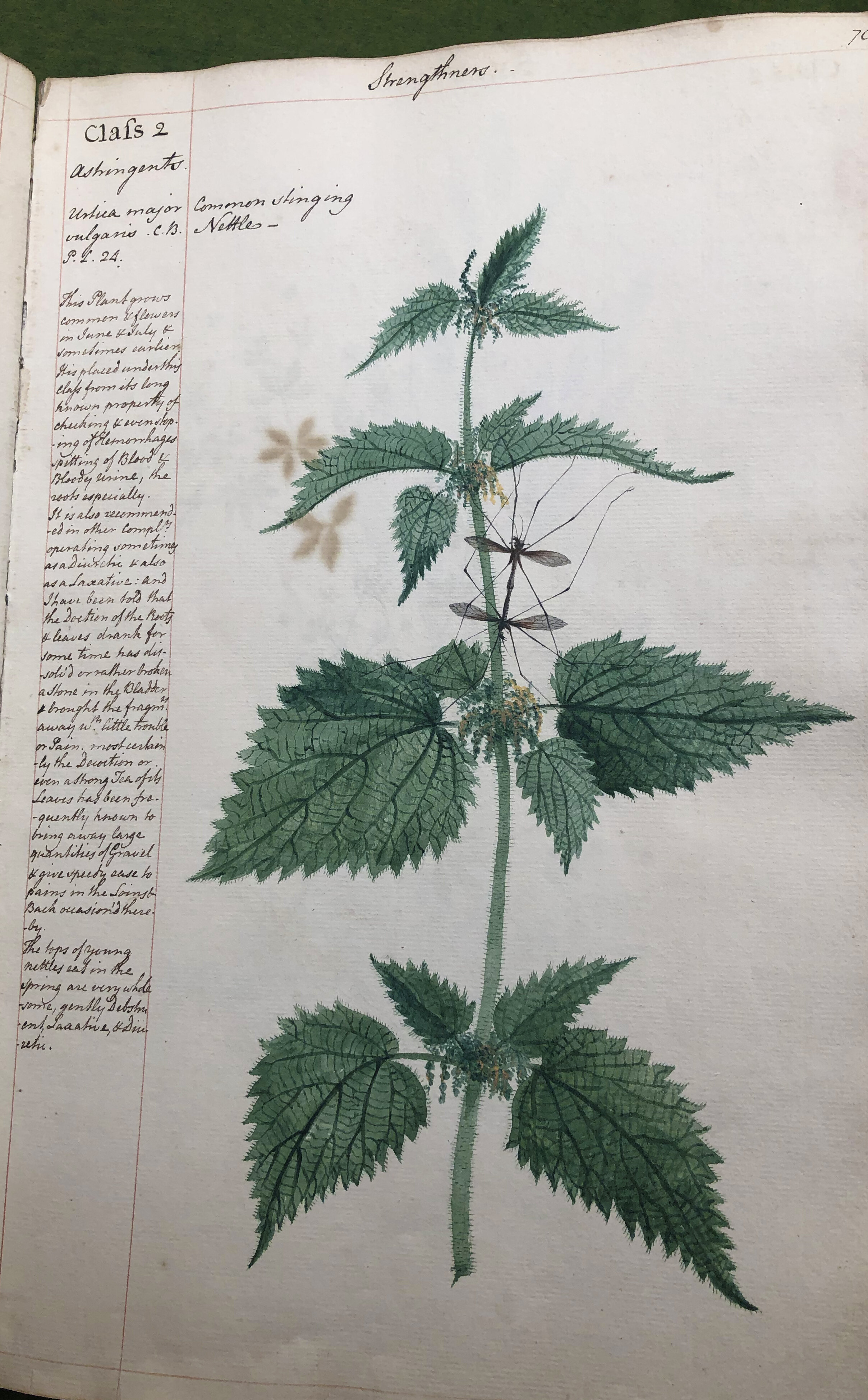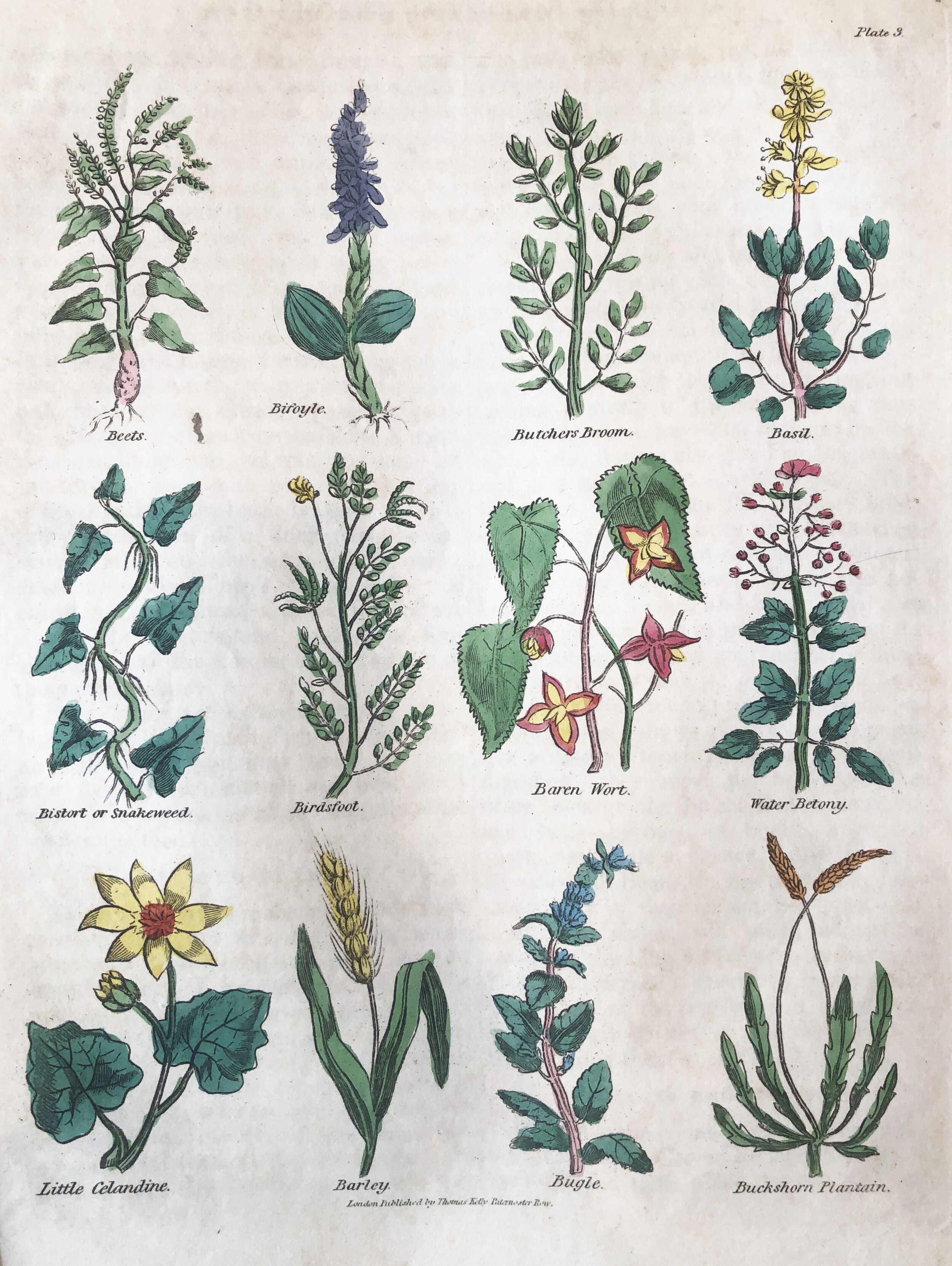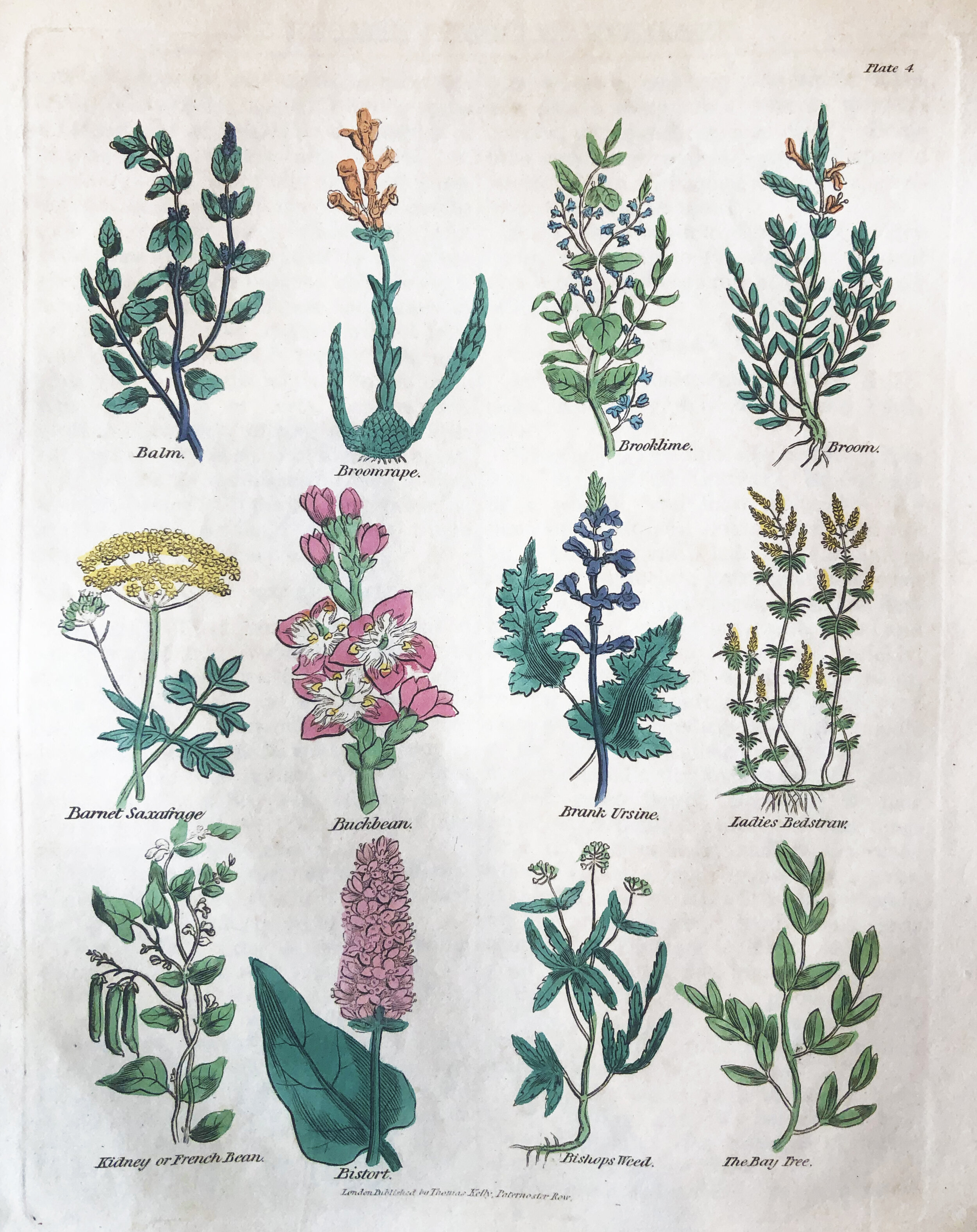Oak Spring's Herbals
Emily Ellis
Our formal garden and Biocultural Conservation Farm continue to overflow with fragrant herbs this summer, but they’re not the only places at Oak Spring that are packed with these beautiful and fascinating plants.
Many of the plants we consider herbs - both cultivated and growing wild on our landscape - are also featured in the Oak Spring Garden Library’s centuries-old herbals: texts that describe the uses, cultivation, habitat, and characteristics of plants that are used for culinary and medicinal purposes.
Around the world, herbals were among the first literature ever produced. Understanding how to identify and utilize plants for medicine was important for human survival, so it's not surprising that this was among the first knowledge our ancestors considered worthy of recording. One of the earliest known herbals was Papyrus Ebers, an Egyptian scroll of medical knowledge dating back to 1550 BC or earlier; other ancient texts include Greek physician Pliny the Elder’s encyclopedic Natural History (c. 77–79 CE), and Shennong Ben Cao Jing, an herbal on medicinal plants and agriculture supposedly written by mythical Chinese emperor Shennong in 2700 BCE. Many early texts blended discourse on magic, theology, and philosophy with the botanical remedies they described, an aspect of herbals that lingers on even in texts published today.
As printing technology evolved over the centuries and global trade and colonization expanded, the content of herbals changed as well. Some of history’s most-well known herbals were Western European texts published from c. 1500 onward, most written by apothecaries, physicians, or early botanists interested in categorizing plants that were new to continent. Many of these European herbals documented the plants that grew in psychic or physician’s gardens - a sort of living pharmacy for the study of medicinal plants, including species from other countries. For those who could afford the gorgeous, hand-illustrated texts, herbals were an important reference tool.
We’re fortunate to house many of these historically significant texts in the Oak Spring Garden Library; in 2009, during Bunny Mellon’s lifetime, the library published a catalogue of 63 herbals selected from the collection titled, An Oak Spring Herbaria. The book, written by Lucia Tongiorgi Tomasi and Tony Willis with a forward penned by Mrs. Mellon, can be read for free on Oak Spring’s Issuu page.
While many cultures around the world have studied, cultivated, and used herbs without documenting that knowledge in books, herbals remain an important way for us to understand how some people of the past understood and related to plants, and how their knowledge evolved. Scroll down to read about several of history’s significant and interesting herbals from the Oak Spring Garden Library collection.
Buch der Natur (Konrad Von Megenberg, 14th Century)
Buch der Natur, written by German scholar and bishop Konrad von Megenberg (c. 1309-1374), in one of the first scientific encyclopedias to appear in Europe. While the text includes extensive descriptions of the human body, the heavens, animals, and other parts of the natural world, Konrad - a knowledgable botanist - devoted 163 vignettes in the manuscript to plants, including the crocuses, cucurbits, and fruit trees pictured above. Although the artist behind the illustrations is unknown, it appears that they illustrated the plants from life, rather that imitating illustrations from other texts. Only 56 copies of Buch der Natur are known to exist, and out of them, only 46 - including the Oak Spring Garden Library’s copy - are illustrated.
Mattioli's Commentarii (Pietro Andrea Mattioli, 1565)
Written by Pietro Andrea Mattioli (1501-1577), an Italian botanist and physician, Commentarii was the most renowned herbal of its day. The edition housed in the Oak Spring Garden Library was published in Venice in 1565, one of only two copies printed on blue-grey paper. It contains 900 woodblock prints produced from planks of pear wood, designed and engraved by Giorgio Liberale and Wolfgang Meyerpeck; the Oak Spring Garden Library collection also includes three of the woodblocks.
Popular herbals were often translated into many languages to broaden the audience for botanical knowledge, and Commentarii, which was published in many different languages up to 1744, also included valuable information on new-to-Europe plants.
A Curious Herbal (Elizabeth Blackwell, 1737-1739)
A Curious Herbal - two copies of which reside at the Oak Spring Garden Library - is an encyclopedia of medicinal plants and knowledge illustrated and compiled by 18th century Scottish botanical artist Elizabeth Blackwell, during a time when women rarely were able to undertake such enterprises. The book was published in weekly installments between 1737 and 1739, containing 500 hand-colored illustrations of plants from the Chelsea Physic Garden in London, including many species that had recently been brought to Europe from North America, such as tobacco.
Blackwell undertook the monumental project in order to help repay her husband Alexander Blackwell’s debts and release him from prison, where the physician had been imprisoned for shady business dealings. While the book was a success and she succeeded in securing Alexander’s release, he was executed in Sweden several years after. You can read more about A Curious Herbal here.
Phytognomonica (Giovanbattista Della Porta, c. 1588)
An Oak Spring Herbaria includes a section on “curious and strange” herbals in the library collection, among them Phytognomonica by Giovanbattista Della Porta, who Tomasi describes as “one of the most eccentric and encylopedic personalities to frequent the cultural circles of 16th century Italy” (An Oak Spring Herbaria, 297). While Della Porta was an avid naturalist, he also remained tied to the “magic scientific” tradition of the medieval period and rejected the scientific experimentation of the Renaissance era. He was a believer in the so-called “doctrine of signatures,” which suggests that herbs resembling parts of the body could be used to treat those body parts’ ailments. According to Della Porta’s logic, plants resembling teeth (such as toothwort) would cure toothaches, plants with red flowers would reduce inflammation, and so forth. While we certainly wouldn’t recommend using this book for medical reference, it was a popular publication at the time - and is fascinating to look through today.
Webster’s Distribution of English Medicinal Plants (Joshua Webster, c. 1789)
This one-of-a-kind manuscript by Joshua Webster (1711-1803), an English physician and the inventor of ‘Cerevisia Anglicana’ - a beer rich in Vitamin B that was extremely popular in the latter half of the 19th century - features stunning and accurate watercolor illustrations and hand-written notes by the author (An Oak Spring Herbaria, 230). Webster’s Distribution of English Medicinal Plants classifies plants based on their curative properties, including Nervous, Strengthness, Stomachius, and Narcotics. While it’s unknown whether or not Webster intended to publish his manuscript, it remains one of the the most distinctive and beautiful herbals in the collection.
Culpepper’s Complete Herbal (Nicholas Culpepper, 1828)
In the Oak Spring Garden Library’s collection are two editions of Culpepper’s Complete Herbal, written by famous astrologer, herbalist, and alchemist Nicholas Culpepper (1616-54). His Herbal, first published in 1652, would remain in print for over three hundred years, and was considered an important manual for physicians as well as laymen; Culpepper even got in trouble with the London College of Physicians for translating another popular medical text for Latin into English in an effort to make it more accessible to the general public (236). Culpepper’s herbal presents a series of plants in alphabetical order, includes important information on the plant’s habitat, medicinal properties, and how to use it as treatment, as well as categorizing them based on their astrological influence.
In addition to exploring the free digital catalogues on our Issuu page, you can also learn more about the books in the Oak Spring Garden Library collection and their roles in the history of art, botany, and medicine on Google Arts and Culture.

